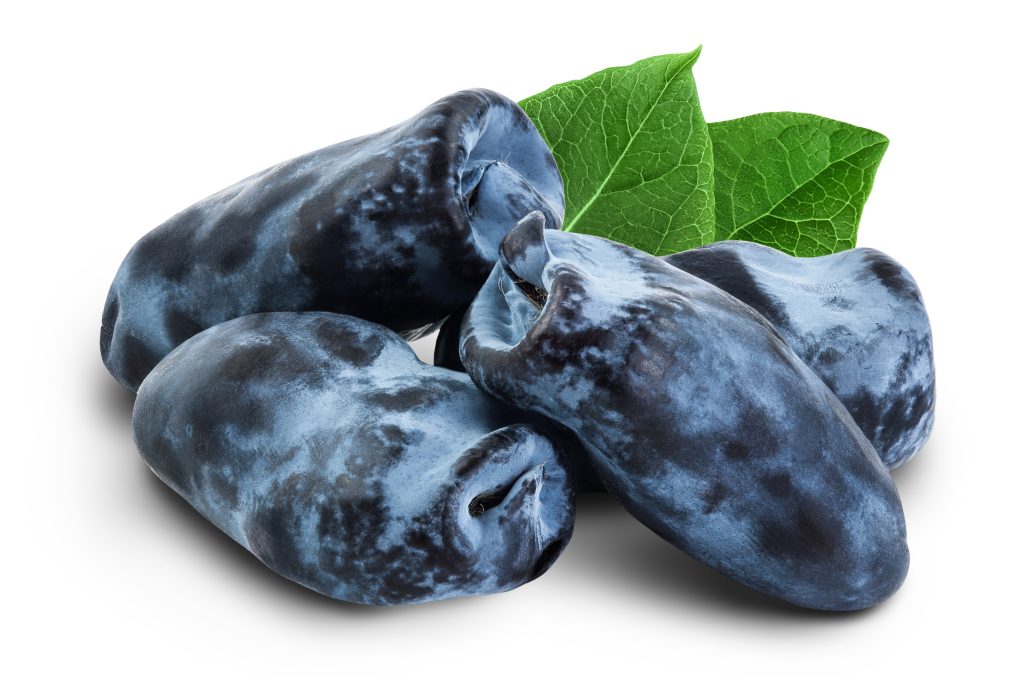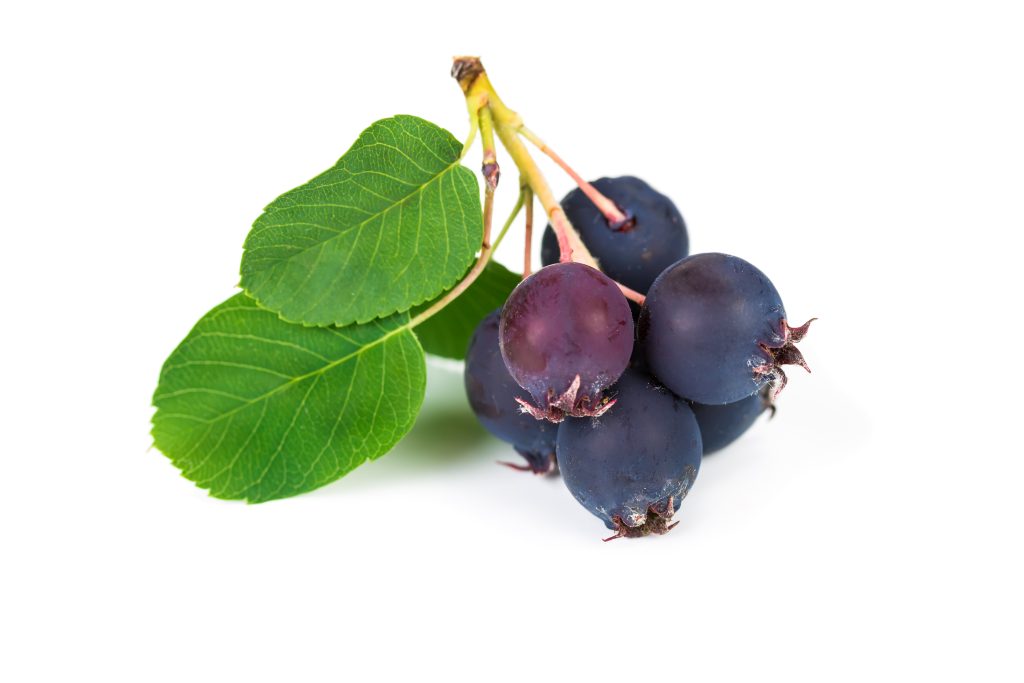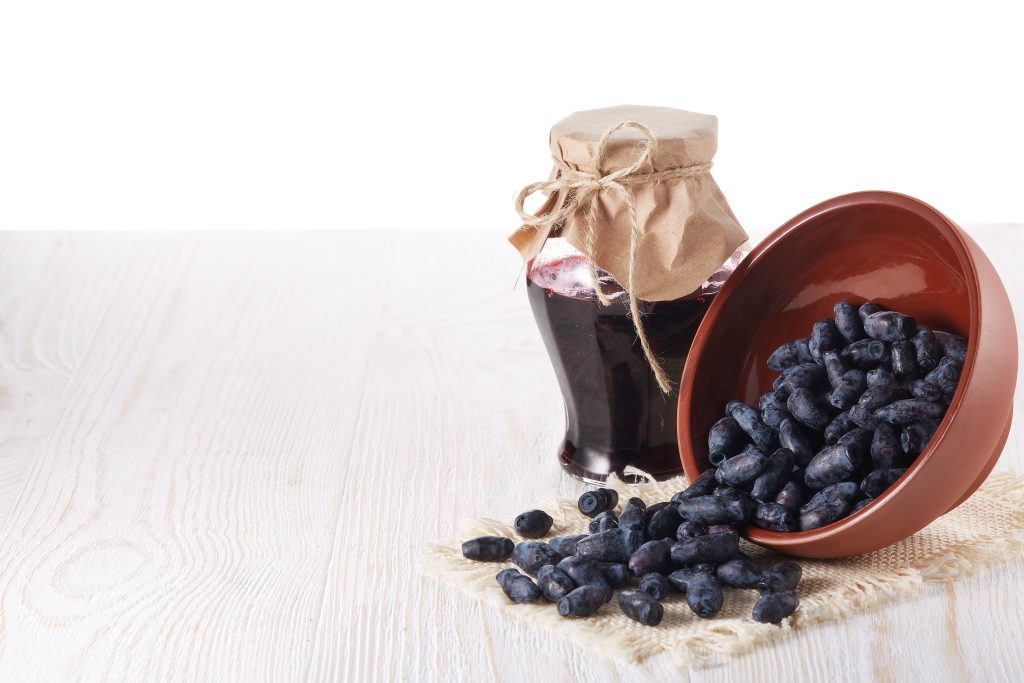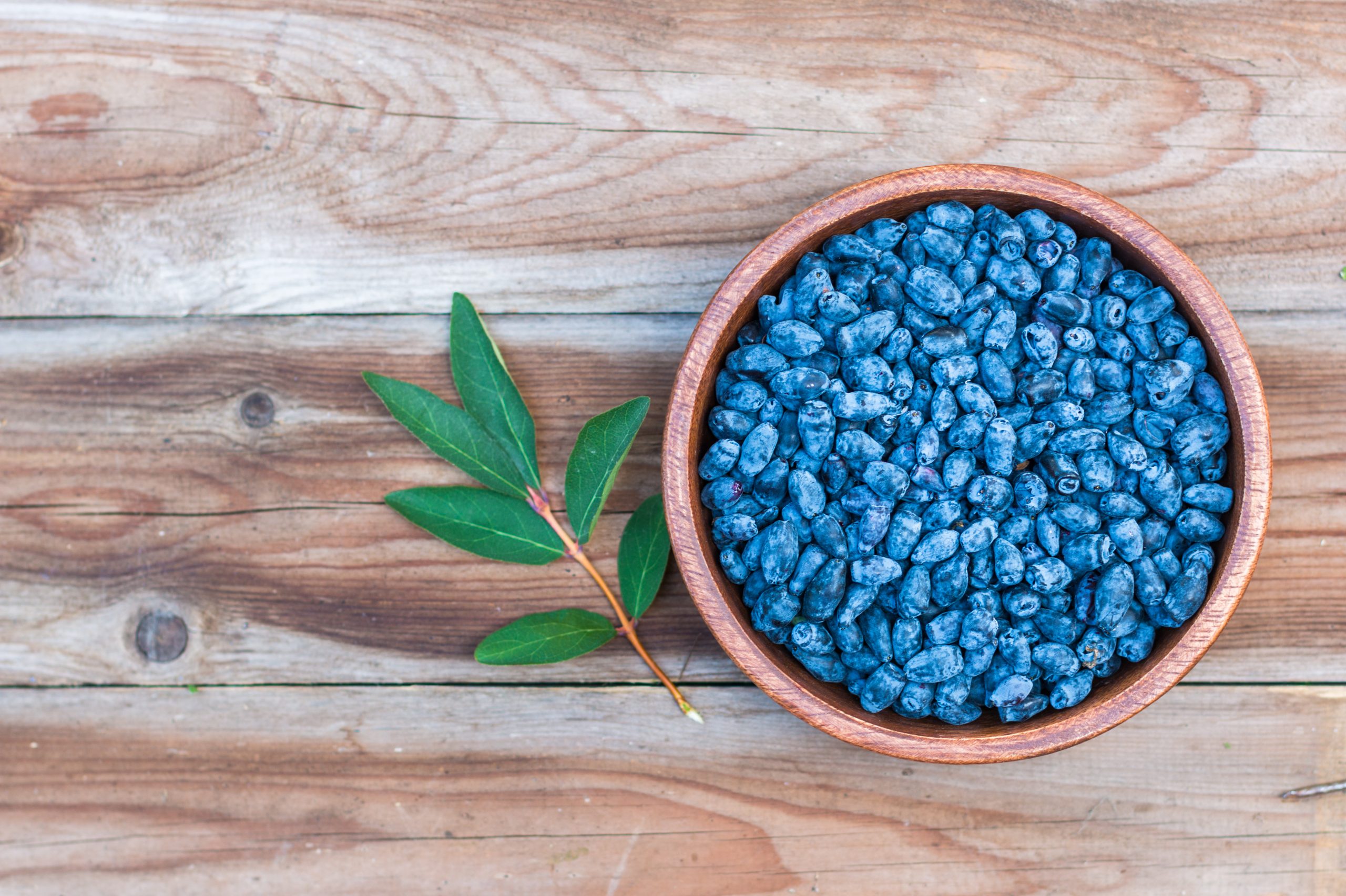Haskap is a small, elongated fruit with a sweet and tangy flavor that is sometimes compared to a blend of blueberries, raspberries, and black currants. It’s a nutritious fruit rich in vitamin C, antioxidants, and fiber.
Table of Contents
What is a Haskap?
Haskap is also referred to as honeyberry, sweet berry honeysuckle, or delectable blue honeysuckle. The fruit’s distinctive flavor mixes the tartness of raspberries and the sweetness of blueberries, and it is often blue-purple in appearance.
The name, Haskap, is for the Ainu people of Northern Japan and means “berry of long life and good vision.”
Haskap berries are a well-known superfood because they contain abundant vitamins and antioxidants. They can be eaten fresh, used to make ice creams and jellies, or used in baked items. They are typically gathered in the late spring or early summer.
With their bell-shaped blossoms and lovely, elongated leaves, haskap bushes are also highly valued for their decorative value.
The History of Haskap
The haskap fruit is indigenous to Asia, particularly Northern Japan and Russia. However, many other nations, including the United States, Canada, and Siberia, now cultivate it. This distribution has increased haskap cultivars that produce better, cold, hardy, pest-resistant fruits. The different varieties include Borealis, indigo gem, boreal beast, tundra, boreal blizzard, boreal beauty, and aurora.
The fruit has increased in popularity due to its distinctive and delectable taste and its nutritional advantages of having high levels of minerals, vitamins, and antioxidants.
The spread and expansion of the haskap fruit industry have been significantly influenced by international trade. For instance, Canada has grown to be a significant producer and exporter of haskap berries, alongside China and Japan. Canadians have a breeding program at the University of Saskatchewan.
The haskap fruit has cultural significance because it has long been utilized in traditional Japanese medicine. Apart from being used in various baked foods, juices, and jellies, it has also been a part of festivals and celebrations in some parts of Japan.
What Does a Haskap Taste Like?
Haskap typically has a tangy flavor when eaten raw, followed by a mildly astringent aftertaste. It is used in sauces, jams, and baked products since cooking reduces tartness and increases sweetness.
How to Tell When Haskap is Ripe
When figuring out whether Haskap berries are ripe, consider the following visual characteristics:
| Color | Haskap berries typically turn from green to a rich shade of purple or blue as they ripen. However, the color may vary depending on the type of berry. |
| Texture | Haskap berries have a luscious and slightly soft texture when fully mature. |
| Firmness | Haskap berries should still have some firmness, even if they are soft at this stage. Being too soft means they are overripe. |
| Scent | Ripe Haskap berries have a sweet and slightly tangy smell, which is more apparent when the fruits are warm. |
| Smoothness/Roughness | The haskap berry’s skin should be smooth and crack-free when fully ripe. Any damage or roughness could indicate that the fruit is injured or overripe. |
When shopping, look for firm, lustrous, plump, deep blue to dark purple haskap berries. Avoid berries that are shriveled or mushy. Additionally, overripe or underripe berries will taste bitter, while fresh haskaps have a mildly tart and sweet flavor.
Are Haskaps and Saskatoons Related?


Both haskaps (Lonicera caerulea) and saskatoons (Amelanchier alnifolia) are small, sweet-tart berries primarily used in baked foods, jams, and other recipes. However, they originate from different families, with saskatoons being a serviceberry variety while haskaps are a honeysuckle type.
Haskaps are more oblong and elongated than saskatoons, which are plumper and rounder. Additionally, haskaps have a more distinct tartness and a deeper blue hue, whereas saskatoons are sweeter and reddish-purple.
Can I Eat Raw Haskap?
Yes, you can eat raw haskap as a snack or add it to salads, desserts, smoothies, and jams. Granola, yogurt, and other fruits like blueberries and strawberries go well with it.
Cooking with Haskaps
Haskaps can be included in a wide range of savory and sweet meals. They are common in regional cuisines, including Finnish, Japanese, and Russian food.
Haskaps are commonly used in preserves and jams in Russian cuisine. In Japan, they are utilized in delicacies like shaved ice and mochi. In Finnish cuisines, they are a common ingredient in cakes, pies, and pastries.

Here are some dishes that incorporate haskap:
Haskap Jam: This simple jam recipe only requires haskaps and two cups of sugar. It’s a great way to preserve and enjoy the fruit year-round.
Haskap Salad: This fresh and vibrant salad combines haskaps with arugula, goat cheese, and a simple vinaigrette. It’s perfect for a summer lunch or dinner.
Haskap Clafoutis: This classic French dessert features haskaps baked in a custard-like batter. It’s easy to make and is sure to impress your guests.
Haskap BBQ Sauce: This tangy and sweet BBQ sauce is a great way to use haskaps in a savory dish. It’s perfect for slathering on grilled meats or veggies.
How to Store Haskaps
Haskaps can be kept differently depending on their freshness and intended use. Freshly picked berries can be stored in the fridge for a week, while frozen berries can last for six months.
Dried haskaps can be stored at room temperature in an airtight container for a year. Keeping haskaps in a single layer is good for preventing molding or bruising.
Nutritional Benefits of Haskaps
Haskap berries are an abundant source of antioxidants, vitamin C, potassium, and fiber, making them healthy fruits. These nutrients have a variety of health advantages.
Antioxidants aid in the reduction of inflammation and lower the chance of developing chronic illnesses, including cancer and heart disease. Fiber controls blood sugar levels and also supports digestive health.
On the other hand, potassium helps control blood pressure, while vitamin C supports the immune system and skin health.
Where to Purchase Haskaps
Haskaps are available at specialty shops, online merchants, or farmers’ markets. Although the fruit’s availability may vary by location, it is typically in season from June to July. Before purchasing, look for fresh, firm berries with a dark blue color.

